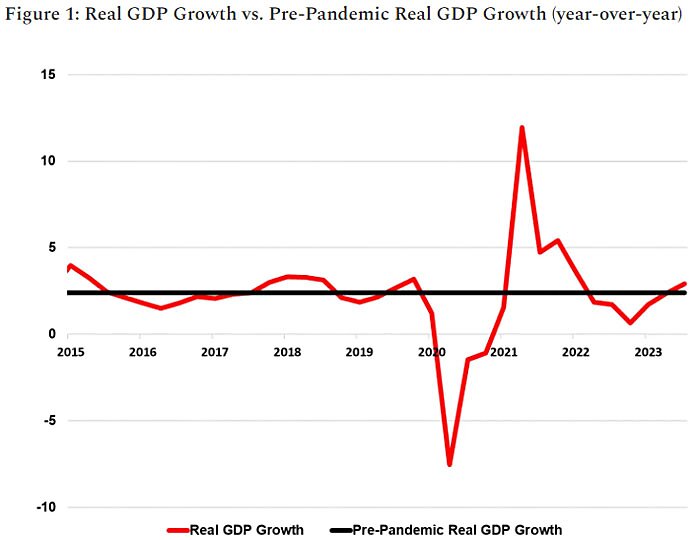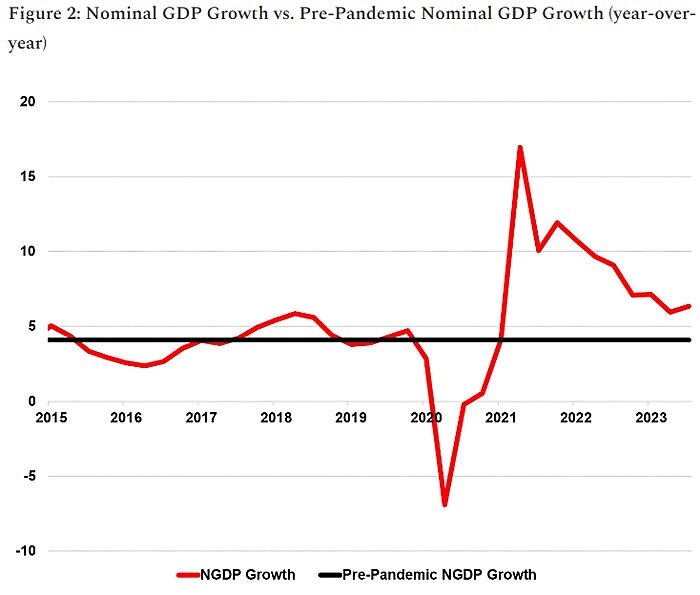I feel as if I am going crazy, because this supply-side explanation just isn’t what I see in the headline economic data.
Let’s start with the basic equation of exchange that tells us:
M x V = P x Y
where M is the money supply, V money’s velocity, P is the price level, and Y is real output. This identity simply tells us that total spending in the economy is equal to the nominal value of total output.
One can rearrange that equation into a dynamic form to show:
Inflation (% ∆P) = Total Spending (% ∆M + % ∆V) — Real Output Growth (% ∆Y)
Because M x V = P x Y, the growth of total spending (% ∆M + % ∆V) is exactly equal to the growth rate of Nominal GDP (% ∆P + % ∆Y). So looking at simple trends in Nominal and Real GDP should give us a reasonable guide as to whether demand or supply changes can explain the disinflation we’ve seen since mid-2022.
Now, if this rollercoaster on inflation was a supply-side story, we’d have expected to see a sharp fall in real output growth happen alongside inflation peaking in mid-2022, followed by booming real output growth alongside inflation falling more recently. There were indeed clear supply problems as an overhang from the pandemic and stemming from the Ukraine war. As a result, it’s true that the growth of real output by Q2 2022 (when inflation was peaking) was lower than the pre-pandemic trend at 1.9 percent (although not catastrophically low). It’s true too that by Q3 2023, real output growth was stronger at 2.9 percent.
So there’s certainly some apparent validity to the supply-side story. Yet, going back to our dynamic equation, this difference implies (for a given total spending growth) that improvements in real output growth might explain just over 1 percentage point of the difference between peak inflation in mid-2022 and inflation today. Yet the inflation rate has fallen by 4.5 percentage points over that period! Changes in supply conditions therefore cannot explain *all* the disinflation.



